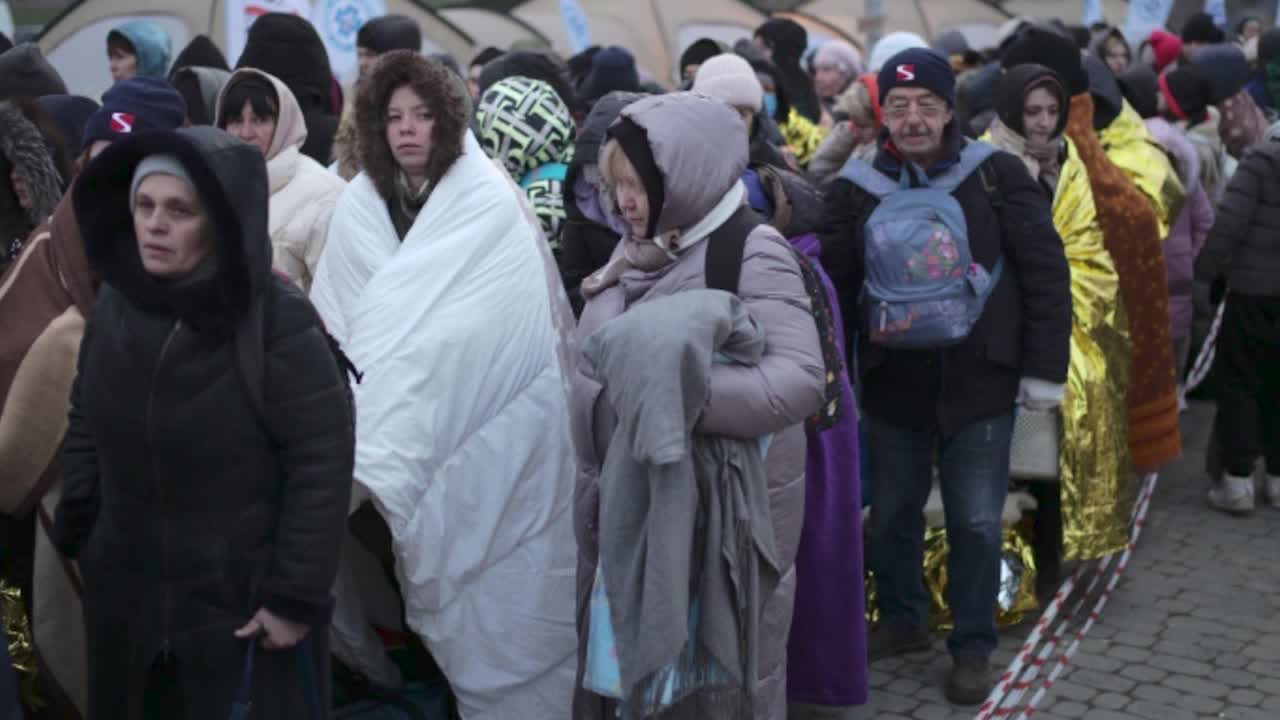Minnesota pediatrician and humanitarian aid workers speak on their service in Ukraine as the war hits six month mark
[anvplayer video=”5131600″ station=”998122″]
The war in Ukraine has surpassed six months now.
Dr. Stacene Maroushek is seeing how it’s affecting refugees firsthand.
“They’re just terrified — all the Ukrainian patients I talk to are just terrified,” she says.
That includes those with loved ones caught in the midst of the fighting.
“They’ll say oh, we haven’t heard from him in a couple of days,” Maroushek, a Hennepin Healthcare pediatrician explains. “They’re not hearing from them regularly, like they used to, and it scares them.”
For nearly two weeks, she’s been stationed at the Tesco Center, a shopping mall in Przemyl, Poland — close to the Ukrainian border — now converted into a way station for refugees.
Families fleeing the fighting can get a cot for the night, a hot meal, and medical care.
“When I say families, I mean women and children, sometimes grandparents because the husbands and the boys, older boys are staying to fight in the war,” Maroushek notes.

Ukrainians flee the war after Russia's invasion.
She’s part of a team of volunteers running a medical clinic at the center.
They treat between 60 and 100 patients a day: everything from the common cold, to post-surgery care, to support for new mothers.
“There’s a number of people still coming from eastern Ukraine where there’s still pretty heavy fighting, and they said it’s just getting too close,” Maroushek says. “Some of them have actually left because their houses have been blown up and there’s nowhere else to go, so they have to leave.”
But there have been some frustrations.
Maroushek says the Polish Red Cross is mandating that refugees can only stay in-country for two days, before they move on to other European countries like Germany.
“There’s some people that really need to stay more than 48 hours,” she explains. “Like for example, somebody who’s just had surgery or a C-section, or with a small baby, or a significant health concern.”
Maroushek says earlier in the war, about 5,000 refugees a day were processed through the center.
That number, she says, has dropped to between two-hundred and three-hundred.
Howard Dotson, a humanitarian aid worker who has travelled to Ukraine and Poland — says he suspects why at least some of those numbers are dropping. .
“More people are repatriating sometimes, than actually evacuating,” he notes. “People, returning to where the conflict zone is no longer — where they lived.”
Dotson — a U.S. Army veteran — most recently has been partnering with Christ the King Lutheran Church in Bloomington.
Their goal is to transport refugees away from war zones, using buses.
Dotson says at one point, the effort was rolling ten buses a day, carrying about 600 women, children and seniors.
He estimates the project has safely evacuated about 50,000 people.
The reason for buses versus trains?
Dotson says trains — and train stations — are more easily targeted by Russian forces.
“They can hit a stationary target, but it’s harder to do the calculus on a moving target when a bus is going 70 kilometers-per-hour on a country road,” he explains.
The United Nations says since the start of the war, 12-million people have fled their homes in Ukraine.
A UN report adds that 5-million have left for neighboring countries, while 7-million are internally displaced.
However — the report also notes that people are crossing back over the border, returning into Ukraine, at the rate of 30,000 a day.
Maroushek says she’s seen refugees who’ve left Ukraine, but hope to return.
“Many people don’t want to go very far from Ukraine because they all want to return to their homes, and they’re hoping their homes will be standing,” she says. “They don’t want to go to America because it’s closer to go back to Ukraine if they’re in Germany or Poland.”
The European Union says it’s granted Ukrainians the automatic right to stay and work among its 27 member nations for up to three years.
Still — the Department of Homeland Security says since war broke out, 71,000 Ukrainians have arrived in the U.S.
The DHS says in that time, 857 Ukrainians have applied to live in Minnesota.
The latest numbers from the Minnesota Department of Human Services show that 300 now live in the state.
Meanwhile, Maroushek says she’s glad to be of help — especially to children at the refugee center.
“I’ve been making daily bubblegum and little stuffed-toy rounds in all the kid’s sleeping areas, and they come seek me out now,” she smiles. “I’m the American doctor with the bubblegum. So it’s been very rewarding and gratifying and much needed.”